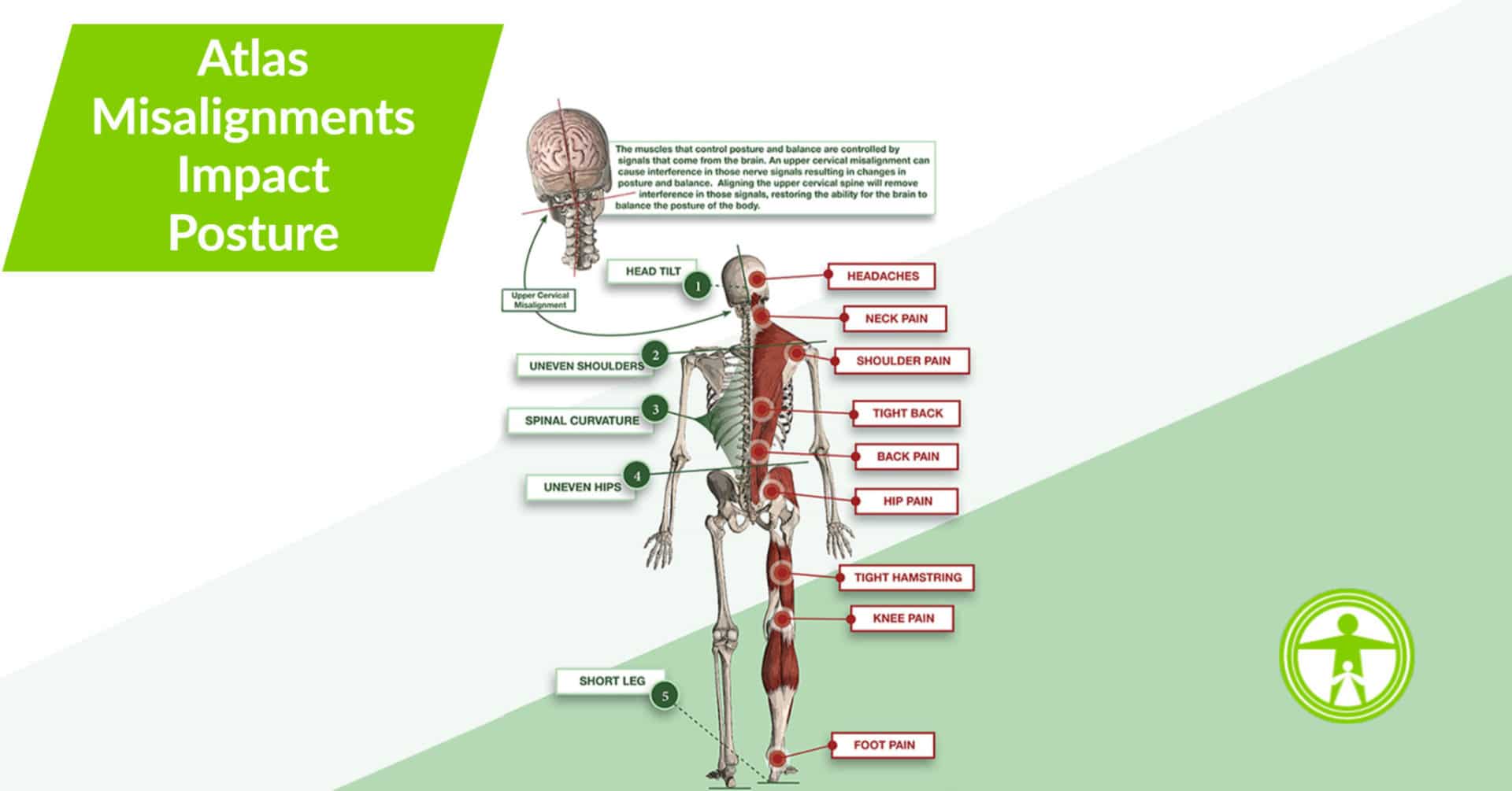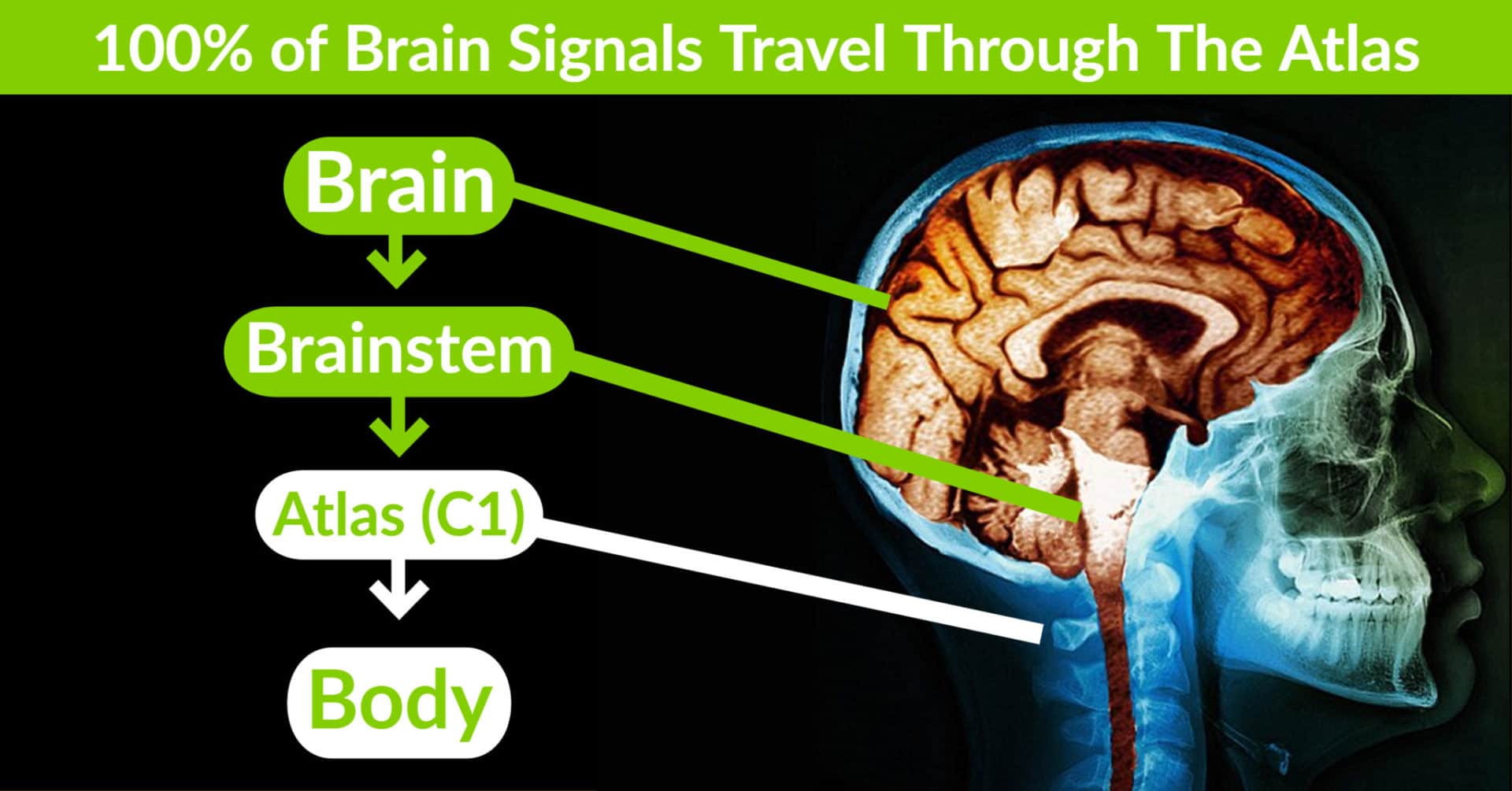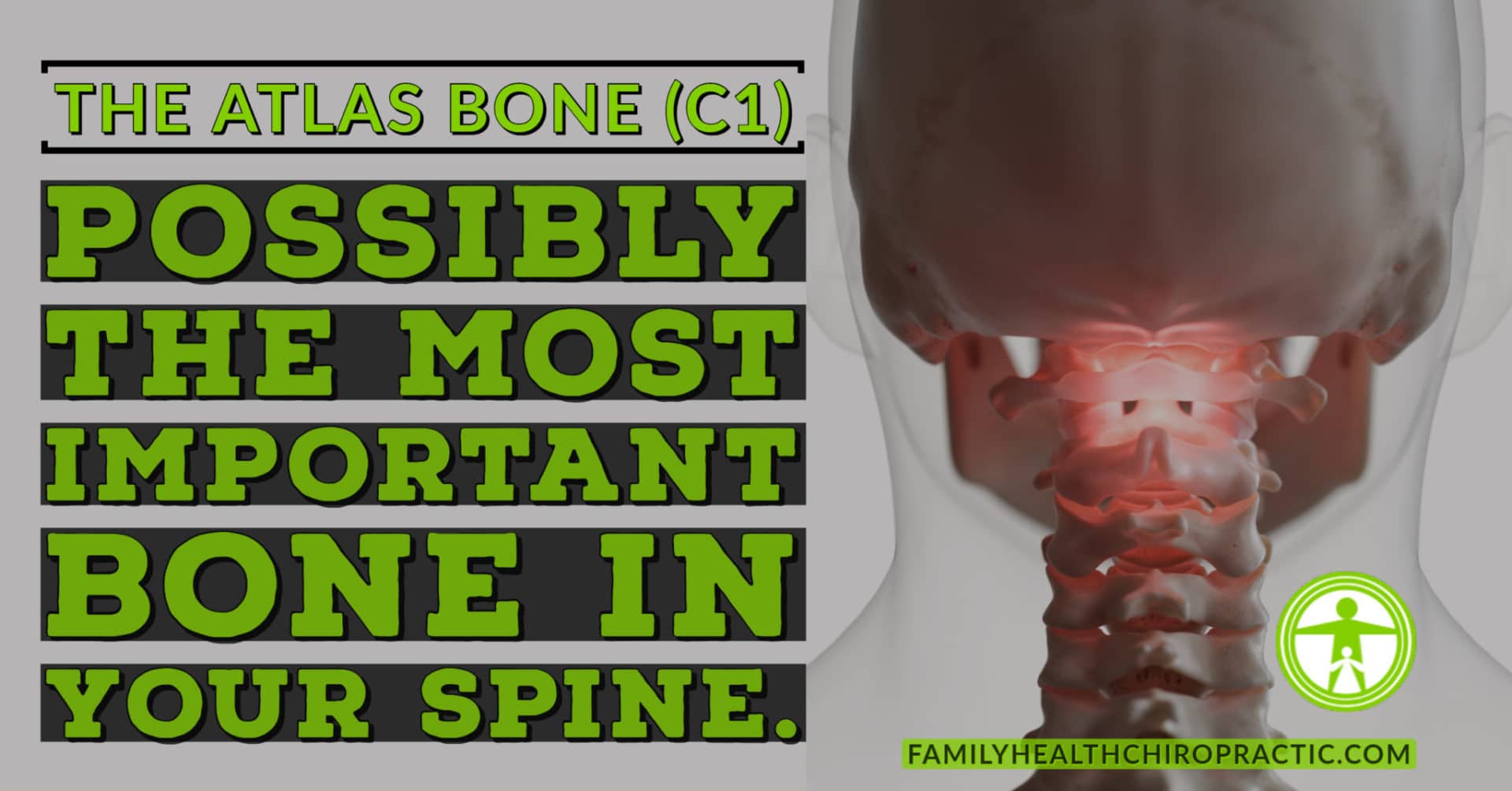What is the Atlas Bone?
The cervical spine (neck) contains 7 bones or vertebrae labeled C1 – C7. The C1 vertebra, known as the Atlas, is the first bone in the spinal column.
It's named Atlas, after the Greek Titan who was condemned to hold up the world on his shoulders (in this case your head).
More than just a foundation for support, the atlas bone itself is perhaps the most important vertebrae of the body. It’s home to a complex bundle of nerves and critical vertebral arteries, and it’s the point responsible for bearing the entire weight of the skull.
In the myth, Atlas must be careful to hold the world still and strong at all times, or everything would come crashing down.
He did this by balancing the world perfectly on his back.
Your Atlas vertebrae has been charged with the same task – it must hold your head strong and still, otherwise problems with balance and alignment will absolutely develop, affecting the entire spine below.
When there is a misalignment of the Atlas, the interactive communication between the brain and the rest of the body is disturbed leading to a structural, functional deficit.
Such misalignments may be present from birth (even in the case of a delivery by Caesarean section) and may be worsened by traumas such as whiplash and crash collisions.

The Atlas Bone Directly Impacts Balance and Posture
Atlas’ role in maintaining balance comes from how it proportions the weight of the head.
The atlas vertebrae itself is wider than other cervical vertebrae, creating a center of gravity that can be reinforced through proper posture.
If the center of gravity shifts to one side or another, Atlas will begin to tilt in that direction as well.
This not only creates instability in the cervical spine, it can exponentially increase the amount of mass the spine is tasked with redistributing.
This produces a shift in the body's center of gravity and therefore an imbalance from head to toe, leading to musculoskeletal dysfunction.
This causes a static false posture, in which one side of the body is more stressed than the other. This is also the reason why pain is generally concentrated on just one side.
This imbalance is measurable with the help of two scales, which can show a weight difference of up to 20 kg between one leg and the other.
Depending on the kind of Atlas misalignment, physiological lordosis or kyphosis of the spine may intensify sharply or disappear altogether.
The first vertebra has a great influence on the balance of the whole skeleton and is therefore directly responsible for an upright posture.

What Causes the Atlas Misalignment?
Disruption to Atlas’ alignment of the head and neck can come from any number of lifestyle incidences. In addition to activities of daily living, atlas misalignments can occur as the result of both chronic and acute conditions.
Some of the more common causes include:
- Cervical soft tissue damage, such whiplash injuries, car crashes, bicycle and trampoline injuries;
- Subluxation of cervical vertebrae below Atlas, resulting in upward instability;
- Poor posture creating overcompensation to one side of the body;
- Static posture that puts a strain on the cervical spine;
- Trauma to the spine resulting in bulging or slipped discs.
Manifestations of problems may even come secondary to Atlas.
For example, kyphosis (reversed cervical curve) may be a recognized condition a chiropractic patient is dealing with. This condition comes with its own symptoms, but could be a catalyst for a shift in Atlas, thus extrapolating spinal issues through a shift in the vertebra.

What Symptoms Are Associated with Atlas Misalignments?
The nerves that exit the Atlas bone directly supply:
- blood to the head
- pituitary gland
- scalp
- bones of the face
- brain
- inner and middle ear
- sympathetic nervous system
This means that the atlas bone can cause the following symptoms:
- Headaches
- Nervousness
- Insomnia
- Head Colds
- High Blood Pressure
- Migraine Headaches
- Nervous Breakdowns/Anxiety
- Amnesia
- Chronic Fatigue
- Dizziness
In short, it's a big deal. So symptoms can range from simple neck pain and soreness, to complete neurological and brain function disarray resulting in overcompensation of movement patterns and chronic pain.
Because Atlas swings the balance of the entire spine, along with its support for the skull, problems can be both localized and referred, further complicating a person’s healthcare status.
Even if the skull rests on a non-leveled Atlas, the eyes need to maintain alignment with the skyline.
As a consequence, the muscles and ligaments of the sub-occipital area are under permanent tension, in their constant attempt to compensate for the alignment of the head.
This continuous stress leads to the body's center of gravity being shifted and to tension, muscle spasms and pain, especially if the muscles are weak and untrained.
This results in cervical problems, tension-related headaches, vertigo, stiff neck and restricted or painful head rotation.
Resolving problems with Atlas requires the comprehensive approach of Chiropractic BioPhysics (CBP).
Only CBP quantitatively assesses the position of the spine against the ideal, to determine the actual degree to which Atlas has shifted out of place.
Moreover, the incremental adjustment plan CBP offers each patient makes it possible to undo the widespread damage that Atlas’ shift may have caused.



